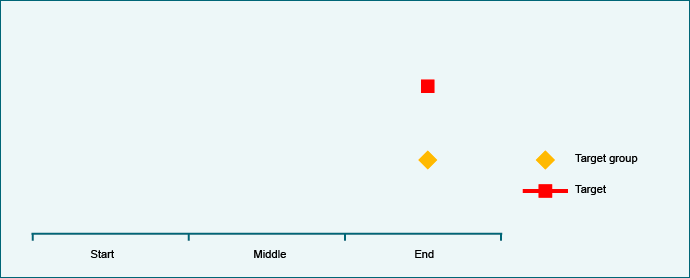
Characteristics
This is a snapshot that compares the actual situation of the target group at a specific point in time with the intended situation at that point in time.
Example
At the end of the process, 40% of young mothers in the region know about the link between clean drinking water and health. That is markedly less than planned (target).
| Advantages | Disadvantages |
| A simple way of recording that the objective has been achieved. | There is no link to the initial situation – it is not known whether and how the target group’s situation has changed since the beginning of the intervention. |
| The investment in data collection is low. | It is not known whether and how the target group’s situation would have changed without the project. |
| The methodological know-how is available internally or can be learnt. | No assertions can be made about the effects. |
| No assertions can be made about the project’s sustainability. |
Suitability
This model is partly suited for steering by the organisation and for learning within the organisation. It is suitable for legitimising when there are agreed objectives. It is of particular use when there is a lack of data about the initial situation and a lack of suitable control groups – or when these can only be obtained at a disproportionate cost. A one-off target/performance comparison is not suitable for an impact assessment.

